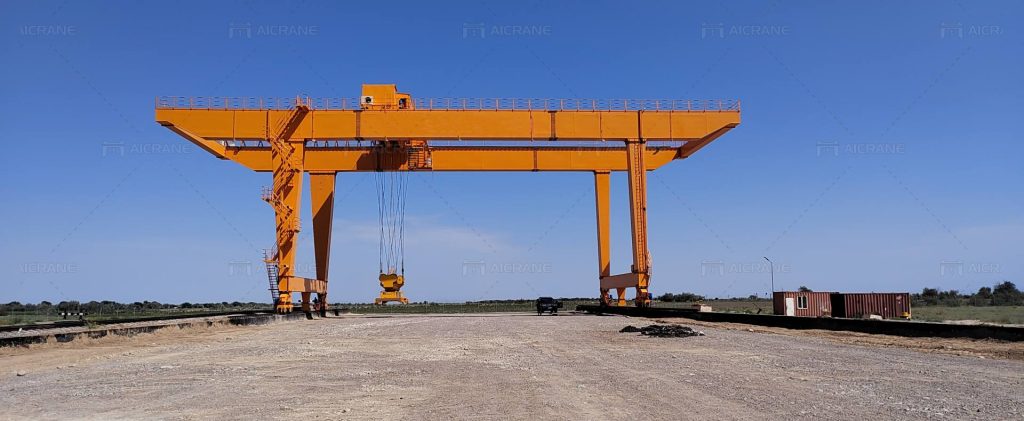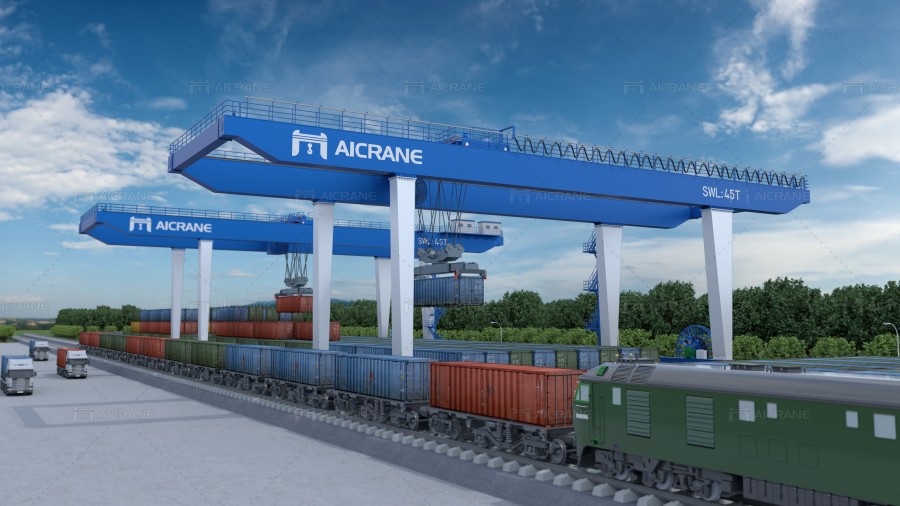In the bustling world of maritime logistics, container terminals serve as crucial hubs for the efficient movement of goods between ships, trucks, and trains. At the heart of these operations are rail mounted gantry cranes (RMGCs), towering machines that play a pivotal role in loading and unloading containers from railcars with precision and efficiency. In this article, we delve into the innovative capabilities and transformative impact of RMGCs in container terminal operations, exploring how these machines optimize cargo handling processes and streamline port logistics.
The Evolution of RMGCs
The history of RMGCs can be traced back to the mid-20th century when the need for efficient cargo handling solutions became increasingly apparent. Early versions of these cranes were predominantly fixed or mobile, limiting their flexibility and scalability in container terminal operations. However, with advancements in engineering and technology, the concept of rail mounted gantry cranes emerged, offering a groundbreaking solution for container handling on railway tracks.

Modern RMGCs are equipped with state-of-the-art features and capabilities designed to enhance productivity, safety, and efficiency in container terminal operations. These cranes typically run on rails laid along the quay or yard, enabling them to traverse the length of the terminal and service multiple berths or rail tracks with ease. With their towering height and impressive lifting capacity, RMGCs are capable of handling multiple containers simultaneously, significantly reducing turnaround times and increasing throughput.
Optimizing Container Terminal Operations
RMGCs play a central role in optimizing container terminal operations by streamlining cargo handling processes and maximizing operational efficiency. One of the key advantages of these cranes is their ability to access containers directly from railcars, eliminating the need for intermediate handling steps and reducing the risk of damage or delay. By seamlessly transferring containers between railcars and storage yards or ships, RMGCs facilitate smoother workflow integration and minimize dwell times, thereby enhancing terminal productivity.
Moreover, RMGCs are equipped with advanced automation and control systems that enable precise positioning and handling of containers, further improving operational efficiency and safety. These systems utilize sensors, cameras, and real-time data analysis to optimize container crane movements, minimize collision risks, and maximize container throughput. Additionally, remote monitoring and diagnostic capabilities allow operators to proactively manage crane operations, identify potential issues, and ensure uninterrupted terminal performance.

Sustainability and Environmental Benefits
In addition to improving operational efficiency, RMGCs offer significant sustainability and environmental benefits compared to traditional cargo handling methods. By electrifying terminal operations and reducing reliance on diesel-powered equipment, these heavy duty cranes help mitigate air pollution and greenhouse gas emissions, contributing to a cleaner and greener port environment. Furthermore, the efficient use of space and resources enabled by RMGCs minimizes land use and reduces the ecological footprint of container terminals, aligning with sustainability goals and regulatory requirements.
In conclusion, rail mounted gantry cranes represent a cornerstone of modern container terminal operations, offering unmatched efficiency, precision, and sustainability in cargo handling. From loading and unloading railcars to transferring containers between ships and storage yards, these towering machines play a crucial role in streamlining port logistics and facilitating global trade. As container traffic continues to grow and port operations become increasingly complex, the innovative capabilities of RMGCs will remain essential for optimizing container terminal operations and meeting the evolving demands of the maritime industry. For details of cranes machines, feel free to check this https://aicraneglobal.com/.